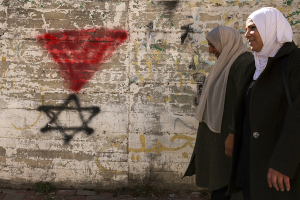Thousands Flock to View 'Holy Robe' of Jesus on Pilgrimage's 500-Year Anniversary
Christians from around the world have been flocking to Germany's oldest city to celebrate the 500th anniversary of the Pilgrimage of the Holy Robe, the seamless garment believed to be worn by Jesus shortly before his crucifixion.
The garment went on display for the first time in 16 years on April 13 in Trier, Germany as a part of the "Holy Robe Pilgrimage 2012," hosted by the Roman Catholic Diocese of Trier.
According to the Trier city website, 700,000 people made the Holy Robe pilgrimage in 1996, the last time the robe was shown. This year, 500,000 people are expected.
Since its grassroots beginnings in 1512, the pilgrimage has only taken place two other times, 1959 and in 1933, as the robe is usually kept out of sight in a sacred shrine within the Cathedral of Trier.
The sacred relic is believed to be the garment Jesus wore shortly before he was crucified, as described in the Gospel of John.
"When the soldiers crucified Jesus, they took his clothes, dividing them into four shares, one for each of them, with the undergarment remaining. This garment was seamless, woven in one piece from top to bottom," John 19:23-4 (NIV) reads.
According to legend, the robe is suspected to have been placed at the Cathedral of Trier some time in the fourth century by Helena, mother of Constantine the Great, who previously discovered the robe in Israel, along with religious relic the True Cross. The Cathedral of Trier, the oldest church in Germany, was built by the first Christian Roman emperor.
The 500-year-old tradition of the pilgrimage began in 1512, when Roman Emperor Maximilian I, while attending the Imperial Diet at Trier, requested that the robe be removed from its high altar where it had sat untouched for centuries.
News of the robe's public appearance spread across the city, and as the Trier city website explains, inhabitants started a "grassroots movement" to view the robe at the cathedral.
The robe has previously created a rift between Catholics and Protestants, as some Protestants equate reverence for such items with religious worship.
According to Religion News Service, the robe's existence is now seen as a reason to promote unity among Christian denominations.
"In the modern world, religions have to work together," theologian Bernhard Fresacher, who works with the Catholic Diocese of Trier, told RNS.
"In 2012, we are opening the ecumenical horizon to include many churches because we believe that the existence of Christianity today is only possible with an ecumenical spirit," he added.
On May 5, Christians from various denominations will gather at the Trier Cathedral to celebrate "Ecumenical Day," meant to address the importance of interfaith peace in the world.
The Holy Robe will remain on display in Trier until May 13.
READ: THE PAGAN CONNECTION- DID CHRISTIANITY BORROW FROM THE MYSTERY RELIGIONS?





























